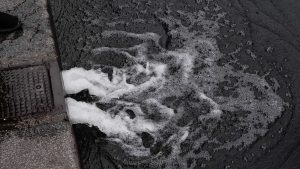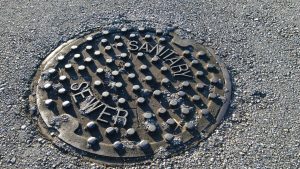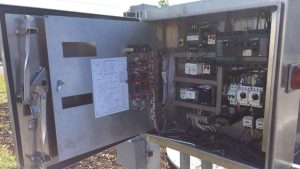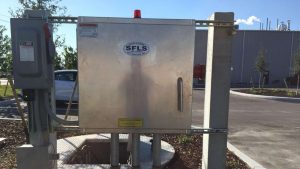Are you aware of the potential dangers that can arise from not properly monitoring your lift stations?
In this article, we will explore the crucial importance of regular monitoring and maintenance for lift stations in wastewater management. Lift stations play a pivotal role in ensuring the uninterrupted flow of wastewater throughout the collection system, preventing backups, overflows, and flooding.
Without proper monitoring and maintenance, these critical components can experience malfunctions and failures, leading to costly repairs and unpleasant odors. By taking proactive measures such as regular inspections, addressing abnormalities promptly, and educating users about proper usage and disposal practices, you can prolong the life of your lift station system and prevent potential hazards.
Join us as we delve into the dangers of neglecting lift station monitoring and discover the steps you can take to ensure a properly functioning wastewater system.
Sewer System Backups and Overflows
To prevent sewer system backups and overflows, you need to consistently monitor your lift stations. Lift stations play a crucial role in maintaining the smooth flow of wastewater throughout the collection system. By using pumps, they move wastewater from lower to higher elevations, preventing backups, overflows, and flooding.
It’s essential to regularly check the sensors in your lift stations to monitor water levels. These sensors will activate the pumps as needed to ensure proper functioning. Failure to monitor your lift stations can lead to severe consequences such as clogged pipes, system malfunctions, and costly repairs.
Costly Repairs and Breakdowns
Consistently monitoring your lift stations is crucial to avoid costly repairs and breakdowns that can disrupt your wastewater management system. When lift stations aren’t properly monitored, small issues can quickly escalate into major problems.
For example, if a pump fails and goes unnoticed, it can lead to a backup in the sewer system, causing damage and potentially costly repairs. Additionally, without regular monitoring, you may not be aware of any potential wear and tear on the equipment, which can result in unexpected breakdowns and the need for expensive replacements.
Environmental Contamination Risks
Neglecting to monitor your lift stations poses significant risks of environmental contamination. Failing to properly monitor the functioning of your lift stations can result in wastewater spills and leaks. These incidents can lead to the release of harmful pollutants and contaminants into the environment, including rivers, lakes, and groundwater sources.
The consequences of such contamination are far-reaching and can have detrimental effects on the ecosystem and human health. Contaminated water can harm aquatic life, pollute drinking water sources, and disrupt the balance of fragile ecosystems. Additionally, the cleanup and remediation costs associated with environmental contamination can be substantial.
Health and Safety Concerns
By failing to monitor your lift stations, you put yourself and others at risk of potential health and safety hazards. Lift stations play a crucial role in wastewater management, preventing backups and overflows in the sewer system. However, without proper monitoring, issues can arise that pose serious risks.
For instance, if water levels aren’t monitored, there’s a risk of flooding and property damage. Additionally, malfunctioning pumps can lead to sewage spills, creating unsanitary conditions and exposing people to harmful pathogens. Regular monitoring allows for early detection of problems, ensuring prompt repairs and minimizing the risk of accidents.
Don’t overlook the importance of monitoring your lift stations – it’s essential for the health and safety of everyone involved.
Decreased Lifespan of Lift Stations
To ensure the longevity of your lift stations, it’s crucial to regularly monitor and address any potential issues that may arise. Neglecting to do so can result in a decreased lifespan of your lift stations, leading to costly repairs and replacements.
Lift stations are complex systems that rely on pumps, motors, and control panels to function properly. Without proper monitoring and maintenance, these components can deteriorate over time, causing breakdowns and system failures.
In addition, ignoring warning signs such as unusual noises, vibrations, or fluctuations in water levels can further contribute to the decreased lifespan of your lift stations.
Partner with South Florida Lift Stations for Comprehensive Solutions
Neglecting to properly monitor lift stations in wastewater management can have serious consequences.
Sewer system backups, costly repairs, environmental contamination, and health and safety concerns are just a few of the dangers that can arise.
By prioritizing regular inspections, prompt addressing of abnormalities, and educating users, you can ensure a properly functioning wastewater system and avoid potential hazards.
Don’t overlook the importance of lift station monitoring to prolong the lifespan of your system and maintain its efficiency.
Contact South Florida Lift Stations for a thorough assessment of your system and implement a monitoring plan that safeguards against potential dangers. Your property, community, and the environment will thank you.








